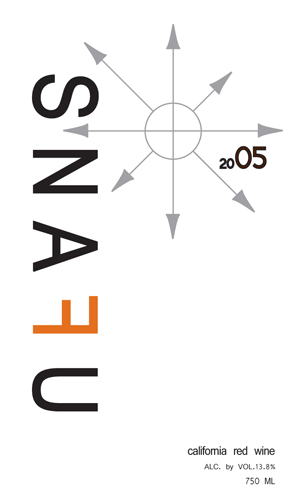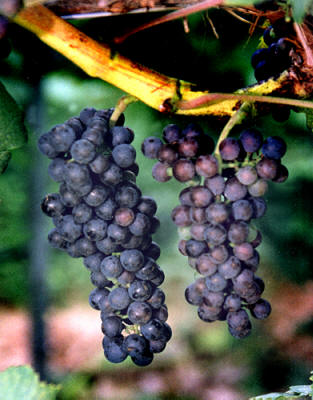 Today the rain and leaves are swirling and the sun isn't due to show itself. On burly fall days like these, there's nothing better than an awesome bottle of wine to hunker down with and lift your spirits!
The last few weeks I've broken down the nerdier nuances of cool red varietals perfect for fall. While fabulous on their own, sometimes the best of the best are actually blends of a few - or several - different grapes. Given the circumstances outside my office window, it's only appropriate that we start exploring these finds with the 2005 SNAFU red blend.
Today the rain and leaves are swirling and the sun isn't due to show itself. On burly fall days like these, there's nothing better than an awesome bottle of wine to hunker down with and lift your spirits!
The last few weeks I've broken down the nerdier nuances of cool red varietals perfect for fall. While fabulous on their own, sometimes the best of the best are actually blends of a few - or several - different grapes. Given the circumstances outside my office window, it's only appropriate that we start exploring these finds with the 2005 SNAFU red blend.
SNAFU? Yep! That would be translated as Situation Normal All F***d Up. This wine is the brainchild of both Paul Moser (Winemaker) and the Local Wine Company, a group dedicated to bringing us some of the coolest blends from the Pacific Northwest and California. I get the sense that the Chicago-based wine geeks at LWC get an idea for a wine and then send their general, and no doubt entertaining, musings to one of the folks in their winemaking contingency....
I can't help but think for the 2005 SNAFU red wine the LWC Powers That Be gave Mr. Moser notes that said something like, "we want a wine with tremendous chutzpah that sources as many grapes from as many subregions in California as possible - and still maintains a sense of place.... You know, the wine you want to come home to at the end of a long day that reminds you of something familiar, but gives you a little something more, too." Moser did their 'request' justice, though from the sounds of it, what's tucked inside that bottle wasn't necessarily what was originally planned; they did call it SNAFU, after all!
SNAFU is a blend of 42% Petite Sirah (the monster grape) & 33% Cabernet Sauvignon, with 8% Merlot and Syrah, 6% Zinfandel and 3% Petite Verdot (the late-bloomer on the playground this fall). What's noteworthy about this wine is how well each of the grapes in this blend harmonize. It's tremendous, in fact! It's greatest component, Petite Sirah, is cold soaked for four days and then pressed to concentrate the fruit. This technique offers the wine fabulous depth (that "oomph" and backbone we spoke about earlier), but manages how much tannin (dryness) remains in the final product. The Cabernet, also cold pressed, offers classic flavors of currant, black fruits, and spice. I argue the Merlot contributes a softer, more elegant edge, and brings home the (similar) fruit flavors you get from the Cab. The Syrah adds a touch of earthiness and herbaceousness; the Zin provides berry sweetness, and the Petit Verdot offers its color and floral aromatics.
I know I don't offer my own wine notes that often on this site, but I do have quite a bit of fun writing them for myself and my clients and their guests. Here's what I came up with the last time I gave this wine a whirl!
This wine's name says it all: Situation Normal... and it is wonderful as a result! This is a killer blend of Petite Sirah (42%), Cabernet Sauvignon (33%), and other red varietals sourced from various vineyards throughout California. SNAFU opens with all the panache you can imagine, fresh blueberry and raspberry fruits explode onto the stage. Then you taste its earthier side, as if it had to take a quick walk through a wet forest to collect itself before the curtain went up. And yet it all comes together easily, delivering a well-executed, perfectly delightful performance. Buy your tickets to this show early!
What red blends are you a fan of this fall season?


 Now that it is fall again and I see kids heading off to school clearly trying to fit in while being their own person, I'm reminded there are some fun varietals out there that don't always get the attention they deserve. And there are some perfect ones for this time of year! Let's take a closer look...
Now that it is fall again and I see kids heading off to school clearly trying to fit in while being their own person, I'm reminded there are some fun varietals out there that don't always get the attention they deserve. And there are some perfect ones for this time of year! Let's take a closer look...